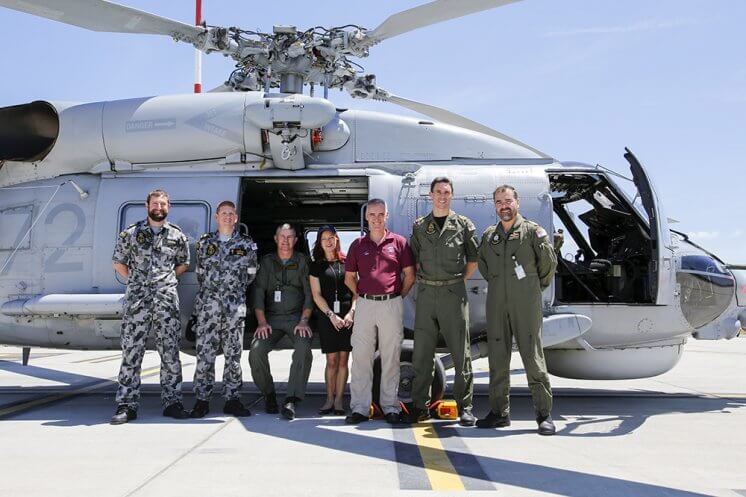With the retirement of the Australian Navy’s Seahawk Bravo S-70B-2 helicopter from service scheduled for Dec. 1, aircraft 872 (fondly known as ‘Christine’) will be taking up a new home at the Australian War Memorial in Canberra.

In the lead up to her big move the memorial senior curator, Stephanie Boyle, visited HMAS Albatross to interview personnel who had a close association with both Christine and the Seahawk Bravo.
The interviews will contribute to the memorial’s extensive Oral History Collection and a broad mix of participation and perspectives were sought. The histories provided covered the breadth of Bravo operations and included histories from Ian Parrott who delivered Christine from Avalon to Nowra in 1991 to Lt Caleb Muggeridge who is flying the Seahawk today.
LCdr Damian Liberale said his association with the Seahawk Bravo started in began in 1989 at HMAS Nirimba when a Seahawk made a short motivational visit to apprentices under training.
Liberale first posted to 816 Squadron in 1993 and said he saw the oral history project as a unique opportunity.
“I was very keen to participate. The project captures a snapshot of my service career and gives me the chance to share my experiences with people who may have no experience with military and service life,” he said.
The project also allowed Liberale to share his enthusiasm for the aircraft.
“I was always comfortable flying in them, 100 nautical miles from land, 200 feet over water at night without night vision devices. I always trusted the aircraft, the people who flew them, and the personnel maintaining them.”
Having joined 816 Squadron in 1993, WO aircrewman Brian Pashley has had a long, and often exciting, association with the Bravo Seahawk, and he was able to provide the memorial with accounts of his experiences in the 1994 Sydney bushfires; the 1995 rescue of French sailor Isabelle Autissier after her racing yacht capsized 800 nautical miles southwest of Tasmania; and the 2003 Canberra bushfires for which Pashley received the ACT Emergency Services Medal.
Pashley also received a Bravery Medal for his actions in one of Australia’s largest peacetime search-and-rescue operations, the 1998 Sydney to Hobart yacht race where he was winched in darkness, 30 knot winds and a 10 meter swell to rescue an injured sailor.
He said the Bravo S-70B-2 was a great asset to Navy.
“It was such a versatile machine, able to lift heavy loads, flag fly, perform search-and-rescue, anti-submarine warfare, surface warfare. It did it all with power to spare and in relative comfort. You could trust the aircraft to do whatever was asked of it,” he said.
Leading seaman aviation technician aircraft Daniel Crowe is currently the last trade supervisor on the shop floor for the S-70B-2 draw down, and his pride in the aircraft and his team’s work is obvious.
“I have a strong passion for military history, including that of the Fleet Air Arm, and I wanted to be involved in the oral history project to tell the story of what it means to be part of the maintenance team at 816 Squadron and what it was like to maintain the Bravo Seahawk,” Crowe said.
“While my history with the S-70B-2 is actually quite short, only six years, in that time I have done a number of small deployments to the Middle East in support of Bravo Flights on rotation, South East Asia deployment in 2016 (with 872) in HMAS Anzac, and I was in Kaikoura, New Zealand, last year during the earthquake disaster relief aboard HMAS Darwin.
“While the S-70B-2 Seahawk is retiring, I will always have many fond memories to draw upon, the most memorable one being the four day transit with Christine from Darwin to Perth at the end of our South East Asia deployment. We flew over the Bungle Bungle Ranges which was a once in a lifetime birds eye view of a very unique part of Australian landscape.
“We get a great sense of satisfaction flying in the machines we maintain, it’s always real privilege and I wanted to share that perspective with the AWM Oral History project,” Crowe added.
The S-70B-2 Oral History project adds to previous collections for Navy’s AS350BA ‘Squirrel’ helicopter that also saw operational service in the Middle East.









